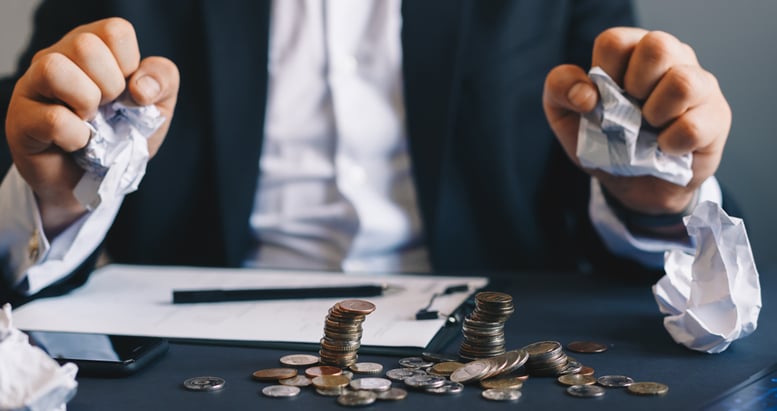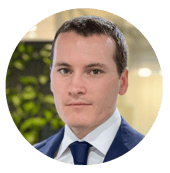Jack Colreavy
- Mar 31, 2022
- 4 min read
Stagflation is coming
There is a lot going on in the world right now; that’s an understatement. However, it is difficult to overstate the long-term economic impact of current geopolitical actions on the world in 2022. To this end, we have passed the event horizon and are now circling the economic black hole known as stagflation.

What is stagflation?
For the uninitiated, stagflation is an economic state of high inflation but low economic growth. Such an event is feared by economic policy makers because it creates a Sophie’s choice scenario - raise interest rates to fight inflation but cripple already low economic growth, or lower rates to stimulate growth and risk pushing high inflation higher.
History of stagflation
Historically, stagflation comes from either a supply shock or bad economic policy. The last stagflation event occurred in the 1970/80s when an oil embargo sent an energy supply shock through a global economy built on a shaky economic policy enacted during the 1960s boom.
Prior to the supply shock, the economic environment was inflationary, with US CPI rising from 1.6% in 1965 to 5.8% by 1970. So, unsurprisingly, the policy response was an increase in the Fed Funds Rate from 4% to 9.5% by Jan 1970. The rise in rates had the desired effect, and inflation started to drift back to a more manageable 3.3% by 1972. Still, the OPEC embargo hit in October 1973, resulting in a two-year recession and inflation peaking at 11.1% in 1974.
Unfortunately, the pain didn’t end there. US Fed Chair Arthur Burns was too quick to lower interest rates before getting inflation under control. These actions resulted in inflation dwarfing its 1975 high and rising to 13.5% by 1980. Through the brave actions of raising rates as high as 20%, by new Fed Chair Paul Volcker, inflation eventually became more manageable by 1983.

Is history repeating?
Fast forward to 2022, and it appears we’re on the cusp of history repeating. The year kicked off with US CPI spiking to 7.9% in February, which has come not just from the back of pandemic stimulus, but a period of loose monetary policy, including the introduction of QE, dating back to the 2008 GFC. The most perplexing part of the story is how trigger shy reserve banks worldwide have been to raise interest rates and fight inflation. In the US, the Federal Reserve has only just begun raising interest rates with a 25 basis point rise in March and more slated for the rest of the year.
Is there a solution to stagflation?
What has tipped the global economy over the edge is the geopolitical event of Russia invading Ukraine, which has resulted in sanctions on Russian enterprise and a commodity supply shock not just to oil but coal, gas, copper, wheat, and corn, just to name a few. It is difficult to overstate the effects of this on inflation and global growth, but inflation is set to run riot.
While consumers are currently feeling the pinch at the petrol pump, this commodity crisis is the domino that will send already high inflation higher throughout the entire supply chain. Moreover, given the low cash rate starting point and taking the recent actions from reserve bank governors into account, the stage is set for stagflation to rear its ugly head.
"Raising the cash rate quickly is the only solution to stagflation."
Jack Colreavy, Associate, Corporate Finance
Raising the cash rate quickly is the only solution to stagflation. However, it remains to be seen whether Governor Phillip Lowe has the courage to lead the charge!
Read the Conversation:
Jack Colreavy:
“ It's not news that inflation is running rampant in the economy. You feel this every day when you fill up your car at the petrol station or you go to the grocery store, but we could be on the cusp of an economic environment called stagflation. For those uninitiated, stagflation is a period of high inflation, but low economic growth.
This creates a Sophie's Choice for policy makers because they need to raise interest rates to fight inflation, but they want to cut interest rates in order to spur economic growth. Neither scenario is ideal. Now, the last time we experienced stagflation was in the 1970s and 80s, which came as a result of a supply shock due to an OPEC oil embargo. This saw inflation peak at 13.5% in 1980, and interest rates in the states peaked at 20% in order to combat the inflation. So now in 2022, we are getting a bit of sense of history repeating. The US CPI in February came in at 7.9% and we're experiencing an energy supply shock thanks to the war in the Ukraine.
So I definitely feel like we could be on the cusp of a stagflation environment in the not too distant future. Now the only real way if we look at history to combat stagflation is to raise interest rates. To learn more about stagflation, please click the link in the description.”
Sources:
If you would like to learn more about stagflation or how other economic topics impact the world, please subscribe to 'As Barclay Sees It' below.
Share Link



-BPC%20Desk%20Note.png?width=767&name=Castile%20Resources%20(ASX-CST-OCTQB-CLRSF)-BPC%20Desk%20Note.png)



